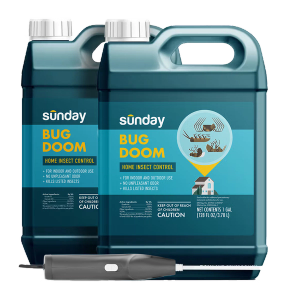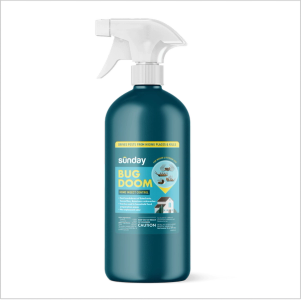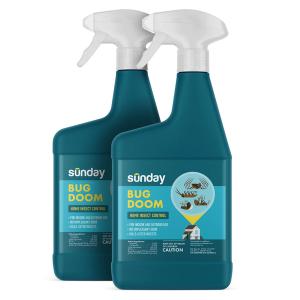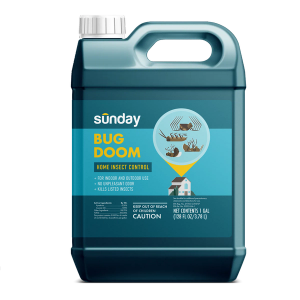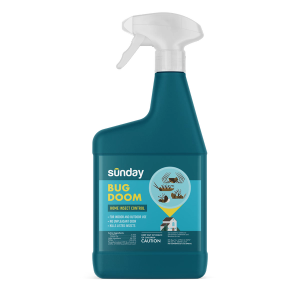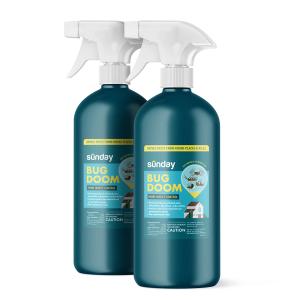You’ve probably scrunched up your nose coming across one of these critters. Although there are hundreds of native species of stink bugs in the U.S., the only one that is a pest indoors is the invasive brown marmorated stink bug. These stink bugs can appear in any part of your house from fall to spring if not managed properly.
Get to know stink bugs
Brown marmorated stink bugs are overwintering insects, meaning they look for shelter indoors during the cold winter months. The smell that earned them their name is actually caused by defense chemicals released when stink bugs feel threatened. The scent of brown marmorated stink bugs ranges from cilantro to burning rubber.
They won’t bite or sting, but you might see them inside walls, attics, or crawl spaces, and near windows or doors as they first come inside in the fall. Brown marmorated stink bugs are found nationwide, and when they’re not seeking shelter indoors, they can be found feeding on foliage and fruiting structures of plants.
Stink bugs aren’t all bad, though. Did you know brown marmorated stink bugs are a food source for some birds and small mammals? You can help birds naturally manage stink bugs by creating a bird friendly backyard! Read on for other tips to keep these insects away.
How to ID brown marmorated stink bugs
You’ve most likely seen these stink bugs crawling on your curtains or window sills. Here are a few ways to easily identify them:
- ½ to ⅝ inches
- Brown/gray mottled color with alternating white and black striped edges
- Shield shaped
- Smooth and rounded shoulder edges
- Five-segmented antennae have two light-colored bands
- Narrow head and short legs
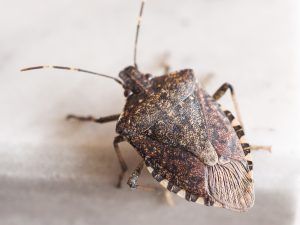
Brown marmorated stink bugs can be confused for western conifer seed bugs. To tell them apart, remember that brown marmorated stink bugs are shorter and wider in shape, don’t have a back leg bulge, and differ in smell from western conifer seed bugs’ distinct musky, evergreen-turpentine smell.
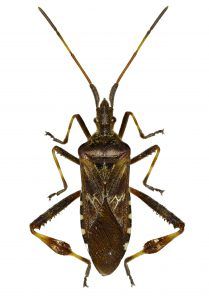
Do stink bugs cause any damage?
Brown marmorated stink bugs don't cause serious damage indoors but can negatively alter their environment as they are invasive to the U.S. They have been spotted in 46 states nationwide, and they can harm plants and cause minor allergic reactions in people.
Garden Damage
Brown marmorated stink bugs are herbivores that like to feed on plant tissue. This can damage fruit trees and landscaped plants growing around your home by causing deformities, dark spots, or decay.
Human Health
Although these insects do not bite or sting, stink bugs can produce minor allergic reactions in people who are sensitive to the odorous defense chemicals they give off.
When are stink bugs active?
Brown marmorated stink bugs can be found year round but are most active and visible in the fall when they are trying to enter the house and in late April to mid-May when they start finding their way outside. When the weather warms up above 50–60° F, they’ll head outside to spend the summer munching on plant tissue and enjoying the warm weather.
How to prevent stink bugs in your home
At Sunday, we believe the best solution for pest control is opting for prevention and removal methods prior to using chemical products. We call this approach Integrated Pest Management. By managing insects holistically, you can prevent stink bugs before they become pests.
- Seal or cover entryways. Caulk or seal gaps around doors and window frames. Be sure to also remove window air conditioning units before stink bugs try to get in in the fall.
- Check and cover drainage areas. Check for big gaps in spots where water is meant to drain out such as window weep holes and cover with a porous material to prevent insect entry.
- Add and repair screens. Screen attic or wall vents, close off chimneys and fireplaces, and tighten any loose fitting screens. Damaged window screens can be another point of entry. Make sure to repair screens and cover gaps!
How to get stink bugs out of your home
Remove by hand
Use rubber gloves, tissue paper, lidded jars, or a vacuum to capture them, then place them in a container with soapy water to prevent breeding.
Create and use an insect light trap
This will capture stink bugs that emerge in your home. Here’s a quick how-to:
- Fill an aluminum pan or container with about ½ gallon of water
- Add dish soap and stir it in
- Point a desk lamp or any light source towards the pan
- Wait about 12 hours or overnight, and voila - you’ll have captured the stink bugs!
The Sunday way to a stink bug–free home
Integrated pest management uses pest products as a last resort, but if you have to spray, get those stink bugs out the Sunday way. Sunday’s Bug Doom is a biodegradable, canola oil and pyrethrin–based yard and home pest control spray that repels and kills stink bugs, including the brown marmorated stink bug.
Bug Doom Insect Barrier will stop stink bugs in their tracks. Use it as a perimeter treatment by spraying outdoor entry points like seams and cracks in the foundation, and near screens, window frames, roof eaves, and garages.
Bug Doom Home Insect Control can be used as an indoor spot treatment on common entry points and hiding places like cracks and crevices, crawlspaces, attics or false ceilings, around doors and windows, and in hollow curtain rods. If you are worried about stink bugs in your home, remember these natural ways to prevent pests before reaching for any products!
Cited sources
Brown Marmorated Stink Bug. PennState Extension.
Brown Marmorated Stink Bug. Texas A&M University.
Field Guide to Stink Bugs. Virginia State University Cooperative Extension.
The Unwelcome House Guest: Brown Marmorated Stink Bug —A Guide for Residents, Property Managers, and Pest Management Professionals. New York State IPM Program.
Stink Bug. University of Georgia Cooperative Extension.
Western Conifer Seed Bug. Cornell University IDL.







